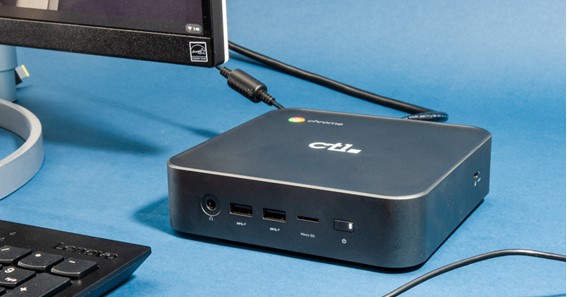Steven is curious as to why people buy Mini PCs, which appear to be hopelessly inadequate.
As the computer market grew, it could support a wide range of models and sizes to meet specialized needs.
What do people do with Mini PCs like the Beelink and ACEPC T8 Fanless, for example? They appear to be extremely underpowered, with as little as 2GB of RAM. However, according to an article I read in a business magazine in the dentist’s waiting room, that market has a lot of sales and rivalry. Steven
Mini PCs are a fantastic example of speciation, a topic I covered in Computer Guardian approximately 30 years ago. There were few models available when the computer market was tiny. As the market grew, it could support a wide range of products tailored to specific demands.
Mini Desktop PCs like the MITS Altair, Apple II, and IBM PC were the first to enter the market. Handhelds, tablets, laptops, games machines, all-in-ones, workstations, servers, and eventually the massive server farms that presently underpin cloud services proliferated as sales increased.
Click here – 5 Symptoms of a Car Bad Oil Pump
PCs were also used in a variety of different goods to create a graphical user interface. ATMs or cash machines, electronic tills, machine tools, public access kiosks, and signage displays are all examples. People are usually amused to see Windows error warnings shown on ticket machines, airport displays, and large billboards.
Of course, different operating systems operate on single-board computers in different devices, but the fundamental remains the same. In addition, boards like the Raspberry Pi have taken over a chunk of the hobbyist industry.
Despite this, Microsoft Windows has around 1.5 billion users, which means there’s plenty of room for devices that cater to specialized markets.
Mini PCs are compact and inexpensive, yet they are underpowered. The ACEPC T8 you mention is £89.99, which is less than the £119.99 cost of Windows 10 Home. For some applications, this makes them appealing.
Desktops in miniature
Mini PCs are desktop computers that don’t take up much room on your desk. They’re so small that they can be readily mounted on the back of a monitor, preferably with a standard VESA attachment. This is a considerable benefit in circumstances where space is restricted or where a tower case is not desired, such as a receptionist’s desk. They can also be used by youngsters and others with less complex requirements.
Reduced power consumption and, in fanless machines, low noise levels are further advantages.
You may even purchase a little PC to use as a backup to a full-sized desktop if you initially set it up. PCs break down occasionally, and no one wants to store a full-sized tower in the spares cabinet. However, as long as your critical data is stored on external hard drives or on the cloud, you can quickly swap in a tiny PC.
Mini PCs aren’t particularly powerful, but entry-level models usually have a quad-core Intel Atom x5-Z8350 processor, which is also found in low-cost laptops and two-in-ones like the Asus Transformer T101, Lenovo Miix 320, HP x2 10 and Linx 12X64, which cost up to £300.
If you’ve used one of these machines – I have two – you’ll know they’re great for email, surfing the web, and running Microsoft Office apps. They aren’t lightning fast, and they can’t multitask very well, but they can get the job done.
Of course, the trick is to stay away from the minimal requirements of 2GB of memory and 32GB of eMMC storage. Windows 10 can run with 2GB of RAM, but it performs best with 4GB or more. Mini PCs with 6GB, such as the Beelink M1 and the N34, and 8GB, such as the GN41 and the Hystou Mini PC, are now available.
While 32GB of storage is technically plenty for Windows 10, you’ll eventually need to connect an external hard drive to perform upgrades. It’s preferable to start with at least 64GB, preferably more.
Of course, more powerful tiny PCs are available. A Core i7 processor, 32GB of memory, a 2TB M.2 SSD, and a 2TB hard drive, for example, can all be found in an Intel NUC (Next Unit of Computing). The price of £1,382 from PC Specialist is the primary disadvantage of that spec. Although it is larger than most compact PCs, the Mac Mini satisfies the same purpose.
Why would you buy a small PC instead of a laptop or a two-in-one computer? There are two main causes behind this. To begin, you can use a TV set or a mini PC with a large monitor. Second, you can connect a good, inexpensive USB keyboard – even an ergonomic model if you’re concerned about your health. This raises the cost, but a good monitor and keyboard will easily outlast a cheap laptop and are far more pleasant to use.
Set-top boxes for television
In general, I think a Roku stick, Now TV box, Amazon Fire TV, or similar device is best for video streaming. Mini PCs, on the other hand, can be used as set-top boxes and, as previously stated, can be mounted on the back of a television. All you need now is a Bluetooth mouse and keyboard, or a keyboard with a built-in trackpad.
Mini PCs can run Kodi, Plex, and MediaPortal media servers and client apps, as well as play high-definition YouTube videos in a browser. Netflix, Hulu, Spotify, BT Sport, Minecraft, email, news, and weather are all available through Windows 10 apps. A mini PC can also be used to run Skype on a television set.
To run programs like Excel, which require precise mouse movements, most people sit too far away from the television. Media servers such as Kodi, Plex, and MediaPortal have remote-friendly interfaces. Windows 10’s touch-oriented apps also work pretty well.
Streaming sticks are fantastic, but they don’t provide all of the features that you might require. Mini PCs can do almost anything, at reasonable prices.
Media servers
Mount a mini PC on the back of a TV set and it will work well as a client, displaying media from the internet or from your PC or NAS (network attached storage) device.
Most mini PCs don’t come with enough storage to work as servers, but you can always add some. The simplest approach is to add an SD card or USB thumb drive: affordable sizes range from 8GB to 256GB. This might not hold your whole media library, but you can delete movies after you’ve watched them and then copy the next movie across over your home network.
You could, of course, add much more cheap storage by buying an external hard drive, with 4TB now being a cost-effective size. This adds an extra box plus wiring, which you may not want.
The other idea – which I have not tried – is to use a mini PC to stream to a Roku or similar device. The catch is whether you need to transcode video in order to display it. Historically, this has required a more powerful processor, such as a Core i3 or better. Intel responded to the problem by adding Quick Sync Video (QSV) to its microprocessors to speed up video conversions, and Intel’s data sheet for the x5-Z8350 (pdf) confirms its presence.
It should therefore be possible to build a cheap media server or NAS around a mini PC and external hard drive, though it won’t be as pretty as buying one from Synology or QNAP.
Note: if you plan to run Linux instead of Windows, check your mini PC of choice supports it.
There must be plenty of PC applications where it would be hard to justify spending £1,000 to £2,000. If a Beelink BT3Pro – with 4GB of RAM, 64GB of storage – can do the job for £129.99, some people will buy it.
We’re building a team of innovators who want to make an impact on our mini laptop solution.
Chuwi, a global laptop,mini PC and tablet strategy partner of Intel and Microsoft,Meant for those who’s constantly striving to succeed and take their business to new height.
Click here – Understanding The Profitability Of Starting A Healthcare Business






